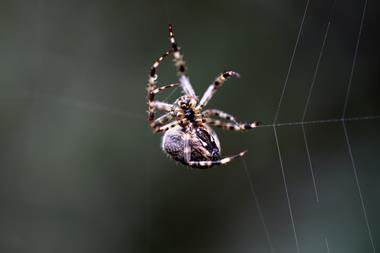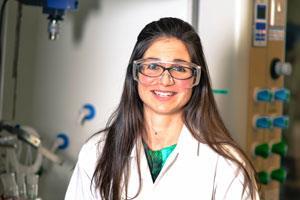Zebra mussels are among the worst invasive species in freshwater ecosystems. Using extremely sticky byssal threads they attach themselves to boats and travel the world, establishing themselves in new locations where they choke out native species. Now, new research shows the structure of Dreissena byssal threads is unique among mussels and may account for their invasiveness.
Matthew Harrington, a chemist at McGill University in Montreal, has studied marine mussel adhesion proteins and their potential applications for bio-inspired materials since graduate school. It wasn’t until arriving at McGill University that he studied zebra mussels, however, ‘because we can just go to the St Lawrence River and pull them out’, he says. Across mussel species the function of byssal threads is the same but they are structurally different. Some are made of collagen and others globular proteins that arrange into helices, Harrington explains. However, Harrington immediately recognised that zebra mussels’ threads were unique. ‘It was really clear that this was neither globular nor collagen it was a completely new biochemical structure.’
Digging into the byssal thread structure and composition using spectroscopy, x-ray diffraction and proteomics Harrington’s group revealed, ‘a β-sheet protein structure stacked on top of each other to create these little crystallites’. While this structure is so far unique to mussels, it does resemble another biological molecule known for its strength and versatility – spider silk.
‘Crystalline β-sheet proteins are often found where high strengths are needed, such as in the case of spider dragline silk,’ explains Jonathan Wilkers, a chemist studying marine biological materials at Purdue University who was not involved in this work. He adds that the properties of protein-based materials generally contribute to their function. Wilkers believes that the details of the structure described here, ‘may be most relevant to mechanics the animals are subjected to’. Specifically, their ability to strongly adhere to surfaces in the face of threats such as predators or storms.
Harrington says this is exactly what makes them such a problem. ‘This ability to produce a robust and versatile attachment to all sorts of surfaces has allowed mussels to become major biofoulers – they stick everywhere,’ he says. Understanding the structure–function relationship could produce methods of preventing this. ‘The more we know about the attachment strategies, the better prepared we are to combat biofouling by mussels,’ he says pointing to work with marine mussel adhesion which led to the development of surfaces that mussels cannot latch on to. Specific tests confirming the structure–function relationship for the zebra mussel byssal threads are ongoing, but Harrington’s group made two other discoveries.
The byssal threads are secreted as α-helices and then processed into β-sheets. ‘These are two completely different protein combinations,’ Harrington notes. Previous work showed that α-helices can become β-sheets by stretching. This is usually a reversible process but not for zebra mussels’ threads. Looking at the amino acid sequence of the protein they found an unusually high amount of the amino acid asparagine, which Harrington believes may play a role in the permanent shift to β-sheets.
Angelico Obille, a PhD candidate studying zebra mussels at the University of Toronto, believes this new work, ‘is a valuable addition to understanding the byssus, as it contributes to the broadening of the perspective on what the mussel byssus can do – it is more than just a sticky material’. However, he adds, that ‘there is still a lot to learn about the byssus, particularly how the different proteins interact with each other to form the cohesive structure and the role of post-translational modifications and post-secretional processing on the final structures’. Harrington too is keyed in on processing as this could improve the production of synthetic silks. ‘There’s a big effort right now to make artificial spider silk and the processing involved is pretty intensive,’ he says. However, Harrington believes that the mussel protein might only need a mechanical force.
References
M Simmons et al, Proc. Natl. Acad. Sci. USA, 2023, DOI : 10.1073/pnas.2311901120












No comments yet